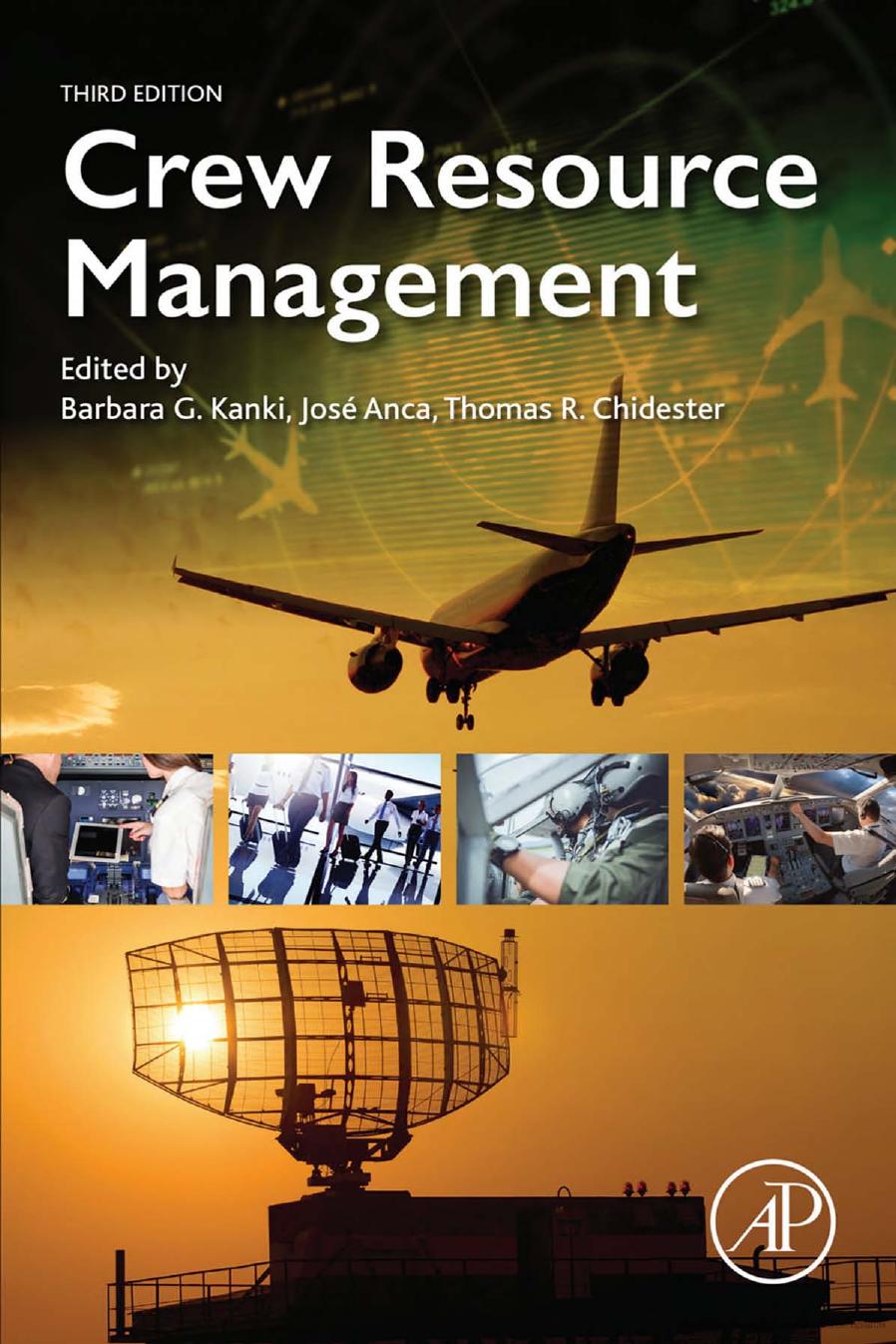Crew Resource Management 3rd edition by Barbara Kanki, José Anca, Thomas R Chidester ISBN 0128129956 978-0128129951
$70.00 Original price was: $70.00.$35.00Current price is: $35.00.
Instant download Crew Resource Management after payment
Crew Resource Management 3rd edition by Barbara Kanki, José Anca, Thomas R Chidester – Ebook PDF Instant Download/Delivery: 0128129956, 978-0128129951
Full downloadCrew Resource Management 3rd edition after payment

Product details:
ISBN 10: 0128129956
ISBN 13: 978-0128129951
Author: Barbara Kanki, José Anca, Thomas R Chidester
The new edition of Crew Resource Management reflects advancements made in the conceptual foundation as well as the methods and approaches of applying CRM in the aviation industry. Because CRM training has the practical goal of enhancing flight safety through more effective flight crew performance, this new edition adapts itself to fit the users, the task, and operational and regulatory environments–all of which continually evolve. Each contributor examines techniques and presents cases that best illustrate CRM concepts and training. This book discusses the history and research foundation of CRM and also stresses the importance of making adaptive changes and advancements. New chapters include: CRM and Individual Resilience; Flight and Cabin Crew Teamwork: Improving Safety in Aviation: CRM and Risk Management/Safety Management Systems; and MRM for Technical Operations. This book provides a deep understanding of CRM–what it is, how it works, and how to practically implement an effective program.
- Addresses the expanded operating environment–pilots, flight attendants, maintenance, etc.
- Assists developers and practitioners in building effective programs
- Describes best practices and tools for supporting CRM training in individual organizations
- Highlights new advances and approaches to CRM
- Includes five completely new chapters
Crew Resource Management 3rd Table of contents:
-
Introduction to Crew Resource Management (CRM)
- The Evolution of CRM
- Definition and Importance of CRM
- Goals and Benefits of CRM
- The Role of CRM in Aviation Safety
-
Human Factors in Aviation
- Understanding Human Behavior in Aviation
- Cognitive and Psychological Aspects of Flight
- The Impact of Stress and Fatigue on Performance
- Decision-Making in the Cockpit
- Human Error and Risk Management
-
Theories and Principles of CRM
- Communication and Information Sharing
- Teamwork and Collaboration in the Cockpit
- Leadership and Followership in Aviation Teams
- Situational Awareness and its Role in Safety
- Workload Management and Task Distribution
-
Communication Skills for Crew Members
- Verbal and Non-Verbal Communication in Aviation
- Barriers to Effective Communication
- Standardized Phraseology and Cockpit Communication
- Techniques for Enhancing Communication
- Resolving Communication Breakdowns
-
Team Dynamics and Leadership
- Characteristics of Effective Flight Crews
- Leadership Styles and Their Impact
- Developing Mutual Trust and Respect
- Teamwork in High-Stress Environments
- Conflict Resolution in the Cockpit
-
Decision-Making and Problem-Solving
- Decision-Making Models and Frameworks
- Factors Influencing Decision-Making
- Problem-Solving Techniques in Aviation
- Risk Assessment and Mitigation Strategies
- CRM in Emergency Situations
-
Situational Awareness and Monitoring
- The Importance of Situational Awareness
- Developing and Maintaining Situational Awareness
- Monitoring the Environment and Systems
- Techniques to Avoid Loss of Situational Awareness
- CRM in Complex and Dynamic Environments
-
Training and Development in CRM
- Overview of CRM Training Programs
- The Role of Simulation and Scenario-Based Training
- Assessment and Evaluation of CRM Competencies
- Continuous Learning and Improvement
- Training Crew Members in High-Risk Scenarios
-
CRM in the Cockpit and Flight Deck Operations
- CRM During Routine Flights
- CRM in Abnormal and Emergency Situations
- Multi-Crew Coordination and Role Clarity
- Integrating CRM into Flight Operations
- CRM in the Airline Industry
-
CRM and Organizational Culture
- The Role of Organizational Culture in CRM
- Implementing CRM at the Organizational Level
- CRM in Airline Operations and Management
- The Impact of CRM on Safety and Efficiency
- Strategies for Promoting a CRM-Focused Culture
-
Human Factors and CRM in Other Transportation Sectors
- Applying CRM to Other Modes of Transportation
- CRM in Ground Operations and Air Traffic Control
- CRM in Other High-Risk Industries (e.g., Healthcare, Nuclear Power)
- Cross-Industry Lessons and Best Practices
-
The Future of Crew Resource Management
- Emerging Trends in CRM and Aviation Safety
- The Role of Technology in CRM (e.g., Cockpit Automation)
- CRM in the Context of New Aircraft Technologies
- Challenges and Opportunities in CRM Training
- The Future of Crew Coordination in Aviation
-
Conclusion
- Key Takeaways on CRM and Aviation Safety
- Continuing the Evolution of CRM
- Final Thoughts on Effective Crew Resource Management
-
Appendices
- A: Glossary of Key Terms
- B: Resources for CRM Training
- C: CRM Guidelines and Best Practices
- D: Index
People also search for Crew Resource Management 3rd :
7 characteristics of crew resource management
what is the purpose of crew resource management crm )
crew resource management definition
what are the 5 elements of crew resource management
maritime crew resource management
Tags:
Barbara Kanki,José Anca,Thomas R Chidester,Crew Resource Management


